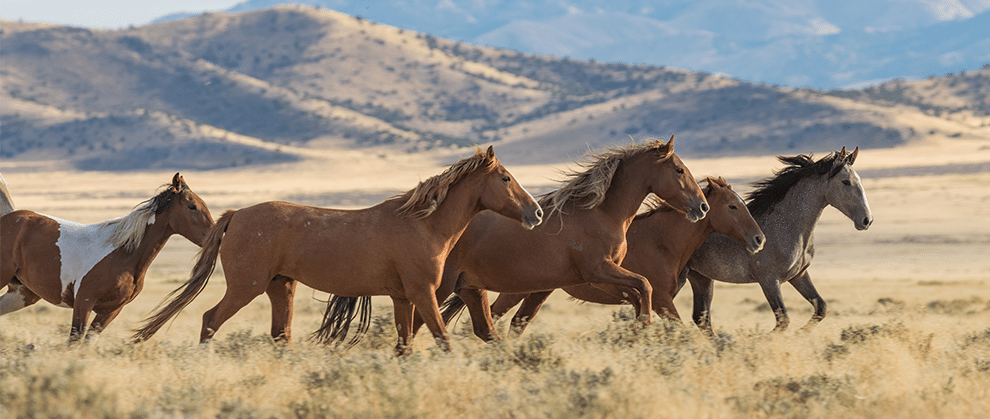
America’s wild horses are a symbol of freedom and an integral part of our national heritage. They embody the spirit and resilience of the American frontier. They reflect our country’s independent and pioneering spirit — and now they need your help.
American wild horses can be found in all 50 states, living on public lands that belong to you and me, the American people. But their home is being threatened. These federally-protected animals are the focus of the International Society for the Protection of Mustangs and Burros, whose mission statement is this:
“The mission of the International Society for the Protection of Mustangs and Burros (ISPMB) is to protect America’s wild free-roaming horses and burros through humane care, treatment and management; public education; sanctuary; legislative initiatives; aggressive litigation; and rescue.”
By the way, these animals are sometimes confused with other horse breeds like Appaloosas or Arabians. But America’s wild horses and burros aren’t just horses. They’re hardy creatures who can survive in all 50 states without human intervention — they’re mustangs and burros. So let’s go ahead and get started by talking about the difference between mustangs and burros.
Mustangs vs. Burros: What’s the Difference?
A lot of people get confused when they’re trying to distinguish a mustang from a burro. The short answer is that a mustang is a type of wild horse, while a burro is a donkey. But there’s a lot more to it than that.
Mustangs are horses of the American West. They’re descendants of horses who escaped or were left behind by early Spanish explorers and settlers. Over time, the mustangs developed into their wild herd, free to roam wherever they wanted across the Western range.
Today, most mustangs live on federally-protected lands, such as national forest areas and Bureau of Land Management (BLM) property. They’re rounded up every year by the BLM and U.S. Forest Service, which put them to work doing things like pulling plows and wagons in pioneer towns. Some horses are adopted out; others end up at holding facilities until they can be adopted.
Donkeys, or burros as they’re often called, are the opposite of mustangs. They live in dry, desert areas like parts of Mexico and America’s Southwest border states, used by miners to carry supplies through the mountains. Today, you’ll still find wild burros near mining towns like Joshua Tree National Park in California, which is home to some of the oldest known burros on record.
The key difference between mustangs and burros is their habitat. Mustangs live in wetter, more grassy areas, while burros prefer dry, rocky terrain. Another way to tell the two apart is by looking at their coloring — most mustangs are dark, rusty brown, while most burros are gray like donkeys.
What Can You Do to Help?
There are two ways to help America’s wild horses and burros: First, spread the word about how these wonderful animals need your help. Second, learn more about what you can do to make sure they’re safe.
Talk to your friends and neighbors, write to your elected officials and help spread the word about the plight of America’s wild horses and burros. The more people who understand their story, the better chance they’ll have of surviving for future generations.

